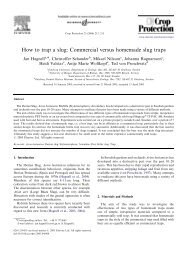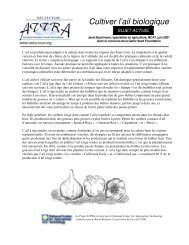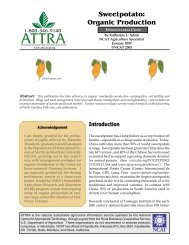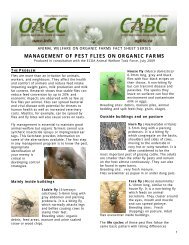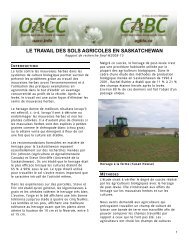Recommended Animal Handling Guidelines and Audit Guide
Recommended Animal Handling Guidelines and Audit Guide
Recommended Animal Handling Guidelines and Audit Guide
- No tags were found...
You also want an ePaper? Increase the reach of your titles
YUMPU automatically turns print PDFs into web optimized ePapers that Google loves.
<strong>Recommended</strong> <strong>Animal</strong> <strong>H<strong>and</strong>ling</strong> <strong><strong>Guide</strong>lines</strong> <strong>and</strong> <strong>Audit</strong> <strong>Guide</strong> 2007 EditionElectrical Specifications for Electric Stunning of Pigs <strong>and</strong> SheepElectric stunning equipment must operate within the electrical parameters that have been verifiedby scientific research to induce instantaneous insensibility.Modern stunning circuits use a constant amperage design. The amperage is set <strong>and</strong> the voltagevaries with the pig or sheep’s resistance. Older style circuits are voltage regulated. These circuitsare inferior because they allow large amperage surges, which can fracture bones <strong>and</strong> cause bloodsplash. The distance between the head electrode <strong>and</strong> the back electrode should not exceed 14inches. The most modern sheep stunners from New Zeal<strong>and</strong> use water jets to conduct electricitydown through the wool.Amperage—Scientific research has shown that an electric stunner must have sufficientamperage to induce a gr<strong>and</strong> mal seizure to insure that the animal will be made instantlyinsensible. Insufficient amperage can cause an animal to be paralyzed without losingsensibility. For market pigs (180 - 200 lbs. / 82-91 kg.—not mature sows or boars) a minimumof 1.25 amps is required (Stunning market pigs with less than 1.25 amps should not bepermitted unless the results of lower amperages are verified by either electrical or neurotransmitterrecordings taken from the brain). Large sows (more than 350 lbs. / more than 160 kg.)will require 2 or more amps. If lower amperages are used, the stunner may induce cardiacarrest but the animal will feel the shock because the seizure was not induced. For sheep aminimum of one amp is required. These amperages must be maintained for a minimum ofone second to give instant insensibility.The Council of Europe (1991) recommends the above minimum amperages. Some plantsstun animals below the Council of Europe recommended minimum amperages in an attemptto reduce blood spots in the meat. Since only a one-second application at 1.25 amps isrequired to induce instant insensibility in market pigs, it is the author’s opinion that plantsshould be permitted to use circuits that lower the amperage setting after an initial, one secondstun at 1.25 amps for pigs <strong>and</strong> one amp for sheep. Plants should also be encouraged to useelectronic constant amperage electronic circuits that prevent amperage spiking. Both practicalexperience <strong>and</strong> research has shown that these types of circuits greatly reduce petechialhemorrhages (blood spots).Voltage—There must be sufficient voltage to deliver the recommended minimum amperage;250 volts is the recommended minimum voltage for pigs to ensure insensibility. Amperage isthe most important variable to measure. The voltage that will be required will depend on thetype of stunner, the wetness of the animal <strong>and</strong> whether or not it is dehydrated. For sheep, aminimum of one amp is required.Frequency—Research has shown that too high an electrical frequency will fail to induceinsensibility. Research indicates that insensibility is most effectively induced at frequenciesof 50 cycles. Frequencies from 2000 to 3000 hz failed to induce instant insensibility <strong>and</strong>may cause pain. However, in pigs weighing under 200 lbs (80 kg), research has shown that ahigh frequency 1592 hz sine-wave or 1642 hz square wave head; only stunning at 800 ma29AMI<strong>H<strong>and</strong>ling</strong>Slaughter<strong><strong>Guide</strong>lines</strong>07.1AMIJune 11, 2007




